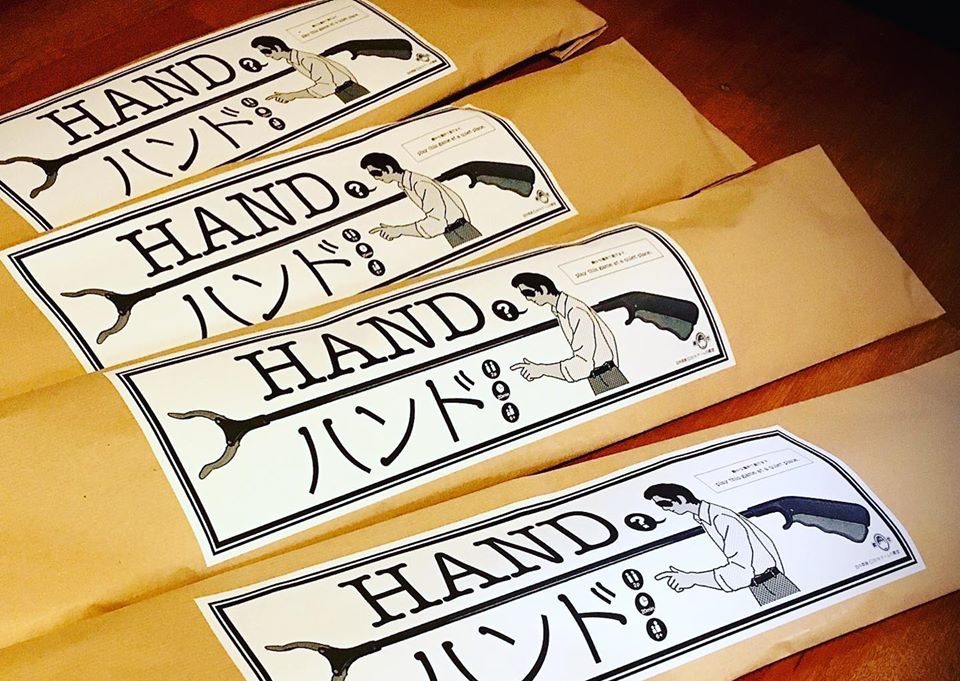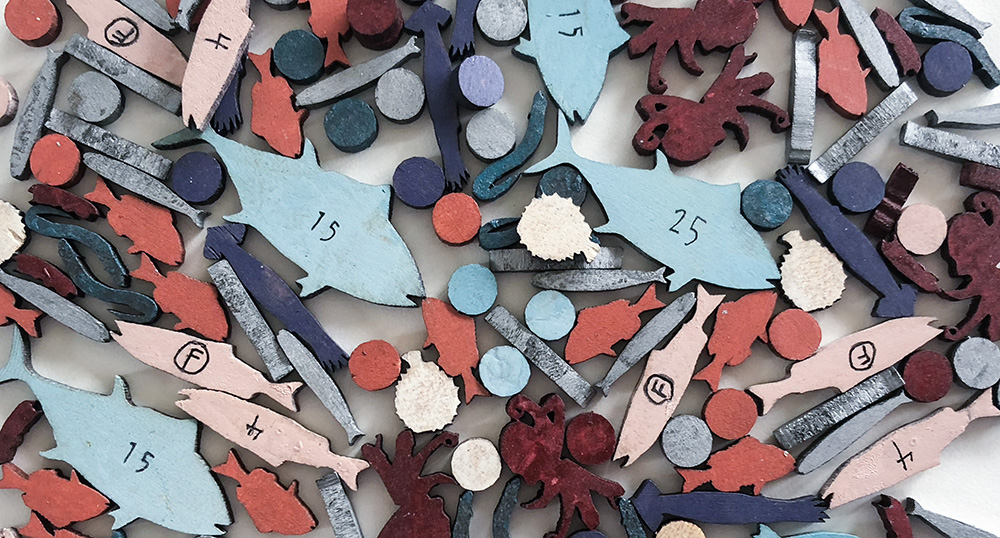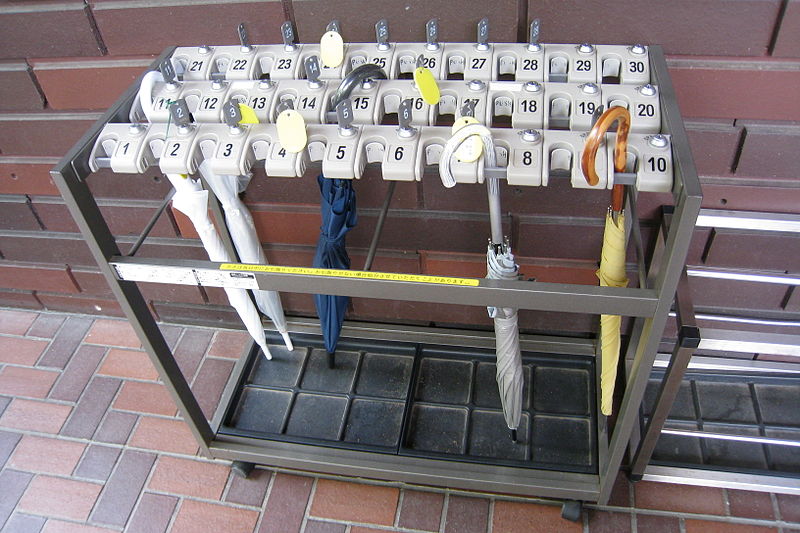As part of our January Spotlight on the Tokyo Game Series, we strive to inform readers of little extra tidbits surrounding the game. Games are made by people, and one of those tidbits we enjoy is learning a little bit more about the people behind them. Some designers shy away from the public stage, while others enjoy being front and center.
There’s an old truism among most new fiction writers: your first protagonist is usually semi-autobiographical. It allows you to draw on what you know as a source of inspiration for your story. But it doesn’t stop there. As a writer grows and matures their style, prose, and subject matter all become increasingly influenced by their life experiences. Whether you’re recapturing a lost moment in time, reflecting on choices not made, or including nuanced elements to your characters you may not otherwise would have considered, having those experiences to pull from deepens and strengthens that material. Whether positive or negative, experience shapes the kind of tales you want to tell and the manner in which you tell them.
The same, however, applies to a lot of creative mediums, including game design. Your experiences influence the decisions you’ll make in the process. So it’s only logical that the more experiences you have, the wider and more robust that well of inspiration becomes.
This is of particular importance with the approach designer Jordan Draper takes with game creation. Blending creative takes on his extensive world travels alongside a concise and almost avant-garde physical presentation, Jordan’s games have quickly established themselves as being as clever as they are artistic. Nearly every release brings with it a story, a unique take on some of the places he’s been to on his many treks. It’s hard to fathom how such games would have sprung to life any other way. Otherwise we’re not sure how the hobby would have gotten an economic game about the Tokyo subway system, a bevy of minigames about a vending machine, or a cutthroat bidding game over food in the Italian countryside. All of these were born out of his personal experiences, with the desire to not only capture a piece of those moments but to share them with a larger audience. It’s not the approach every game designer takes, but it’s the one that Jordan is most comfortable with. And if fan reaction is any indicator, it’s clearly resonating.
His latest trio of games, part of what’s known as the TOKYO series (reflecting his extensive time spent in the metropolitan city and its many unique qualities), are a continuation of this approach. Each possess different themes, game styles, and mechanics than one another, but they all still fundamentally share and celebrate something to be found in this Japanese city. In TOKYO COIN LAUNDRY, players are treated to an array of minigames all centered around the particular qualities of a Japanese laundromat. With the meaty TOKYO TSUKIJI MARKET, players are running competing fishing companies who seek to corner the market in a player-driven economy. And in TOKYO GAME SHOW, one player selects five minigames from among dozens provided and then enacts their very own iteration of a Japanese game show on the other players – with predictably outlandish results.
With plenty of variety and amusing design aspects across three games, we were eager to follow up with Jordan about them since we spoke with him back at the launch of the Kickstarter. It took some time to track him down because, well, he was traveling for much of January. But we were able to find a place where satellites and schedules aligned enough for another brief chat about his designs, what motivates him, and what may be next. We share part of that with you today.
Enjoy!
Round One Questions
CR: What was your Gateway Game?
Container
CR: What was the last game you really enjoyed playing (besides your own titles)?
Hand from Asobi.dept
CR: How big is your game collection?
Around 35-40 games, but I cull and replace as new games I like more come out.
CR: What is your favorite type of game to play?
I love a heavy economic game but only with the right players. Otherwise I’m really into social and communication games that have clever elements for storytelling and therapeutic qualities.
CR: How do you feel about Monopoly?
I think it’s very random and a waste of time now with the selection of better games, but it was fun as a kid.
On the TOKYO Series
CR: We know much of your design work comes from your travels. Where has life taken you to in the last 12 months? Which part of that, if any, stands out as the most memorable?
It’s hard to remember all of 12 months, I’ve been to Japan twice, New York, Salt Lake City, Indianapolis, Norway, London, and I’ve recently taken a train trip through eastern Europe to Poland, Czech Republic, Slovakia, Romania, Turkey, and Austria. I’m probably forgetting some places. I really enjoyed Turkey; it had a unique culture I wasn’t familiar with and the sweets there are incredible.
CR: This second wave of games in the TOKYO line (Tsukiji Market, Coin Laundry, and Game Show) all vary from one another in focus, length, and complexity. Of these, which one came together the easiest design-wise? Which proved to be the most challenging?
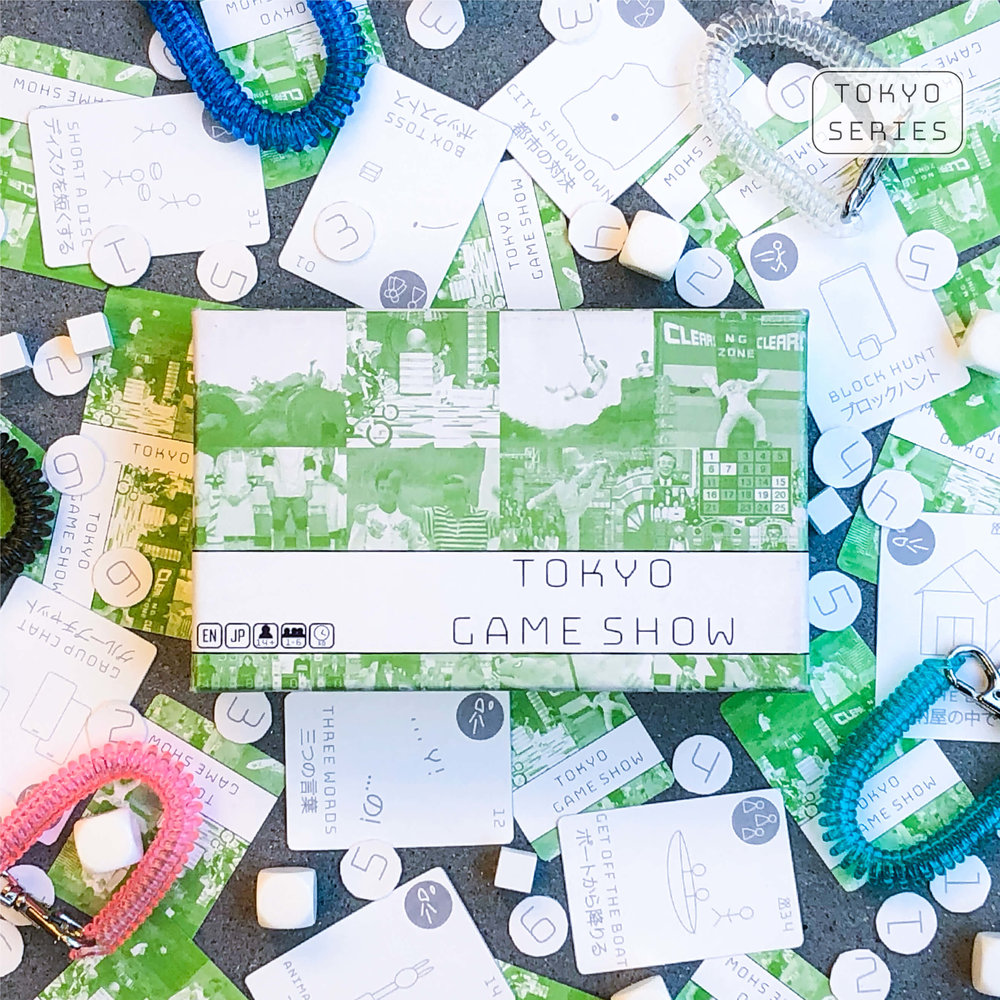 All three of these took quite a while to design – longer than most of the games I’ve done. I would say they were about equal in difficulty to design. They all started with a very clear vision and framework, but the development was longer as they have very intricate qualities.
All three of these took quite a while to design – longer than most of the games I’ve done. I would say they were about equal in difficulty to design. They all started with a very clear vision and framework, but the development was longer as they have very intricate qualities.
I finished Tsukiji first and put it out for beta playtesting, and designed the 67+ odd games in Game Show in around two months. In Coin Laundry Luke Crane and I designed the RPG in there over around 8 months of ongoing Skype calls and meetings, which was a really insightful process that I enjoyed and learned a lot from.
CR: What sort of lessons did you learn after the first Tokyo Kickstarter that you incorporated into this campaign? Did any of these have an impact on the design or production?
I probably didn’t learn enough from the first campaign because I decided I should produce even more content and extra games all at once since the first production went fairly smoothly, but it ended up delaying things a bit because I then had to deliver six games and a handful of extra items. I still managed to get them out the door less than a year from the Kickstarter though, which I’m happy about.
CR: So much of the Tokyo line’s appeal is the appealing way it takes disparate concepts and makes games around them. Are there any specific subjects you’ve wanted to turn into a Tokyo game but have been worried wouldn’t really translate well enough?
I am never worried something won’t translate. I more consider it my artistic mission to make the abstract or unique subcultures relatable to everyone through gameplay. I would like to tackle some more controversial subjects in depth, such as Salary Man, or Day Care Center, as those have a lot of political and social issues tied up in them, but I don’t think they would be quite as relaxed. I’m very happy to expose the niche subjects such as Umbrella Lockers to the world, however.
CR: Speaking of which, I believe you announced towards the end of the Kickstarter campaign the next set in the series?
Yes. The next three games have been announced: Tokyo Umbrella Lockers, Tokyo Capsule Hotel, and Tokyo Sumo. The next washi game is also finished – Tokyo Washi Game Cops.
CR: Are you surprised at all at the way audiences have responded to your particular stylistic approach as a designer and publisher? At what point did you feel that you had an audience for your games?
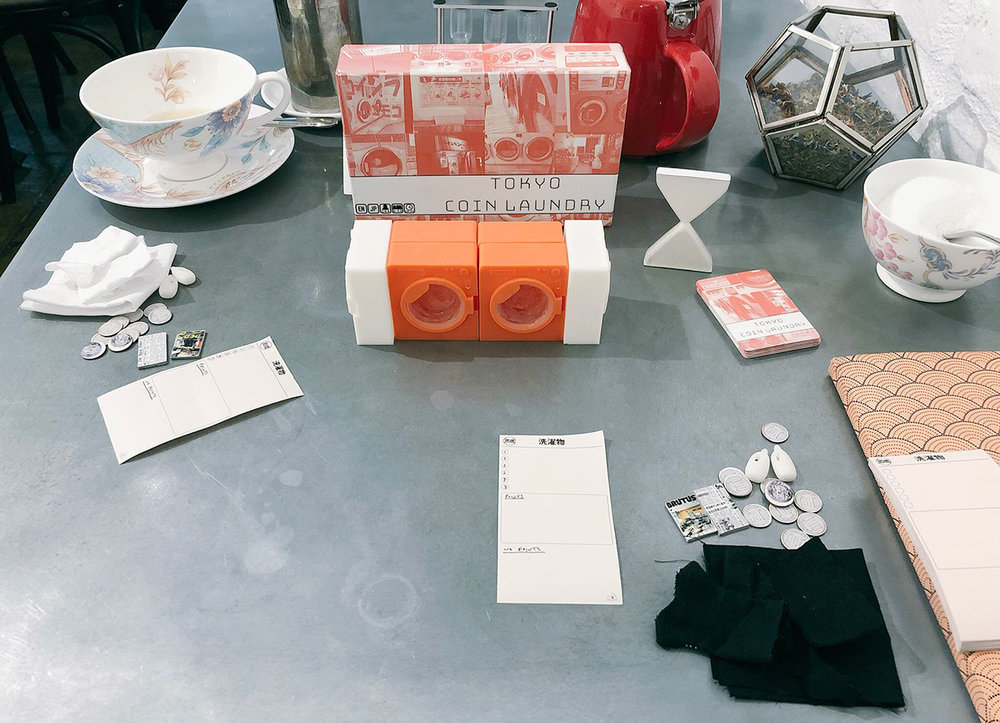 I’m not very surprised at the responses I’ve had, no. I think people feel refreshed and excited to see something so abstract and unique, but still relatable. If someone doesn’t like the artwork, or theme, or game style that’s also a completely valid opinion, but they probably won’t like any of my work then so it’s better if they play what they like. I make games I want to personally play.
I’m not very surprised at the responses I’ve had, no. I think people feel refreshed and excited to see something so abstract and unique, but still relatable. If someone doesn’t like the artwork, or theme, or game style that’s also a completely valid opinion, but they probably won’t like any of my work then so it’s better if they play what they like. I make games I want to personally play.
I considered myself to have an audience around the time I was getting 1,000+ backers on Kickstarter and meeting people who had played my games in random locations. It’s really great to get feedback on your work, but also to have like-minded people appreciating it who find the same joys in the product that you do.
CR: Finally, given how much Tokyo Game Show is inspired by stuff like Takeshi’s Castle, we assume you’ve done your research. And we’re going to assume you have some favorite clips. Do tell…
I watched Takeshi’s Castle both as the original and as Most Extreme Elimination, so the commentary really changes some of the feelings in the clips. I’m a big fan of the soccer ball catch in the mud pit, and the huge boulder you have to run down the hill from. There’s no bad moments in that show actually, hahaha. I wish it would come back…
![]()
We would be a little remiss to celebrate games of this nature without having a little fun with it. And while our poor intern Claudius is still in physical therapy as a result of our last such endeavor (look, it’s not our fault he has terrible balance), we were instructed that it’s probably for the best to keep our efforts to something a bit more…reasonable. Which was a bit of a challenge. Each of Jordan’s games bring with them various methods to entice and entertain, and these latest ones prove no different.
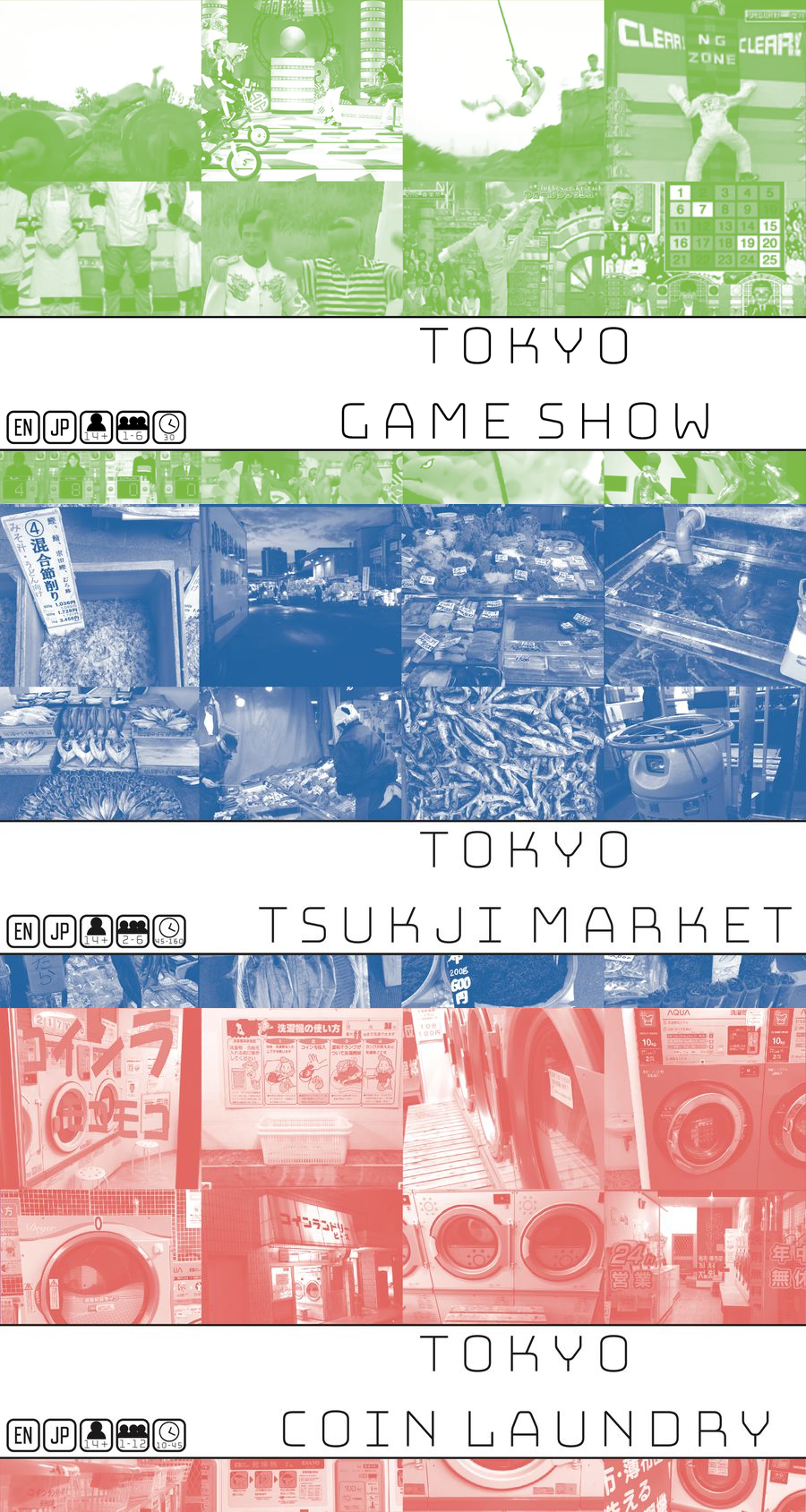
With all of that in mind, then, and with our largest desire to help share the joy and eccentricities they offer, we’ll keep this simple. We’re giving a copy of each of these three games away. All you have to do is see if you’re up for a little trip:
It’s All About The Experience: A Tokyo Series Giveaway
Photo Credits: Tokyo series covers and photos by Jordan Draper Games; Umbrella Stand by Wikimedia.

